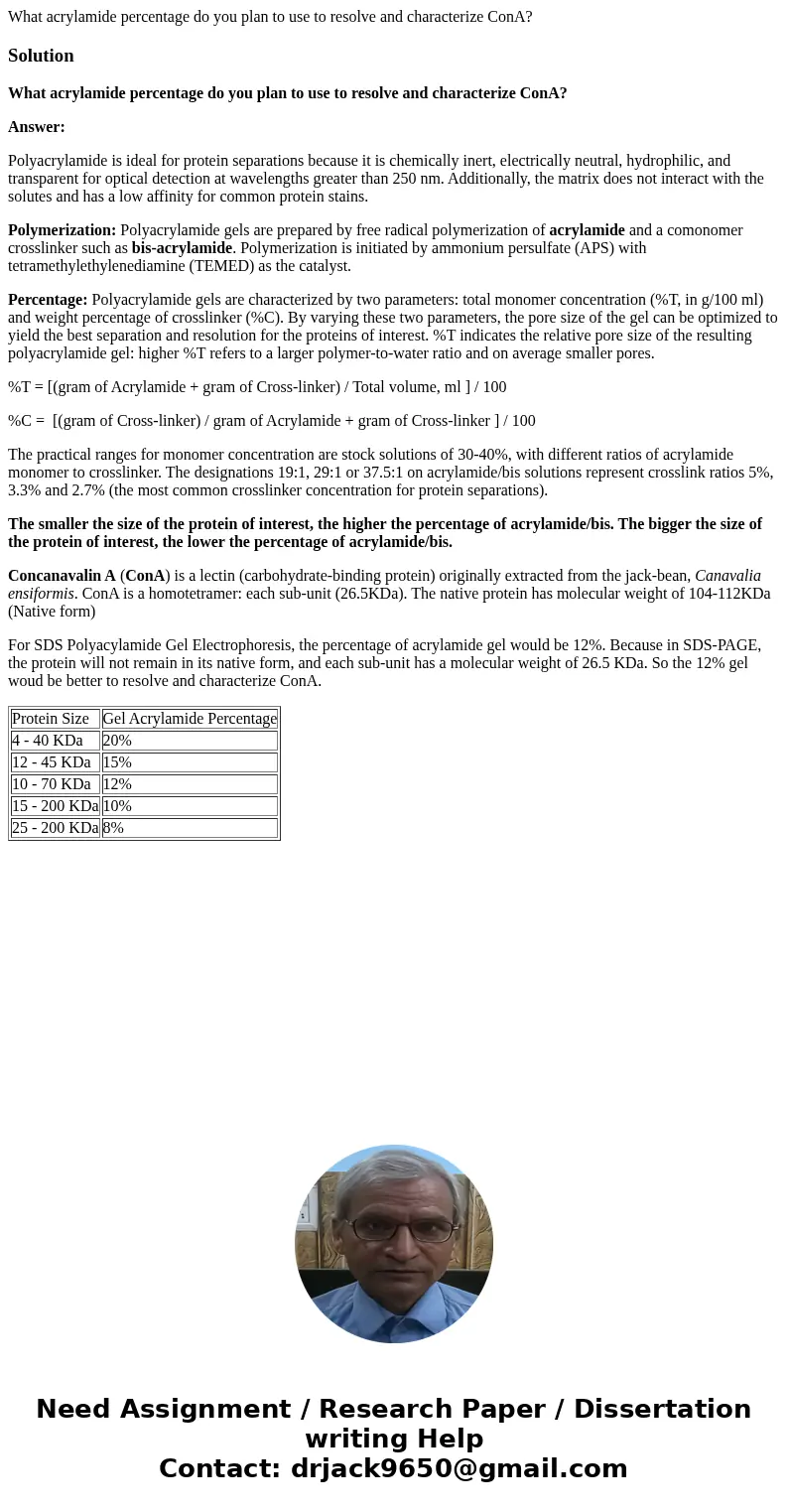What acrylamide percentage do you plan to use to resolve and
What acrylamide percentage do you plan to use to resolve and characterize ConA?
Solution
What acrylamide percentage do you plan to use to resolve and characterize ConA?
Answer:
Polyacrylamide is ideal for protein separations because it is chemically inert, electrically neutral, hydrophilic, and transparent for optical detection at wavelengths greater than 250 nm. Additionally, the matrix does not interact with the solutes and has a low affinity for common protein stains.
Polymerization: Polyacrylamide gels are prepared by free radical polymerization of acrylamide and a comonomer crosslinker such as bis-acrylamide. Polymerization is initiated by ammonium persulfate (APS) with tetramethylethylenediamine (TEMED) as the catalyst.
Percentage: Polyacrylamide gels are characterized by two parameters: total monomer concentration (%T, in g/100 ml) and weight percentage of crosslinker (%C). By varying these two parameters, the pore size of the gel can be optimized to yield the best separation and resolution for the proteins of interest. %T indicates the relative pore size of the resulting polyacrylamide gel: higher %T refers to a larger polymer-to-water ratio and on average smaller pores.
%T = [(gram of Acrylamide + gram of Cross-linker) / Total volume, ml ] / 100
%C = [(gram of Cross-linker) / gram of Acrylamide + gram of Cross-linker ] / 100
The practical ranges for monomer concentration are stock solutions of 30-40%, with different ratios of acrylamide monomer to crosslinker. The designations 19:1, 29:1 or 37.5:1 on acrylamide/bis solutions represent crosslink ratios 5%, 3.3% and 2.7% (the most common crosslinker concentration for protein separations).
The smaller the size of the protein of interest, the higher the percentage of acrylamide/bis. The bigger the size of the protein of interest, the lower the percentage of acrylamide/bis.
Concanavalin A (ConA) is a lectin (carbohydrate-binding protein) originally extracted from the jack-bean, Canavalia ensiformis. ConA is a homotetramer: each sub-unit (26.5KDa). The native protein has molecular weight of 104-112KDa (Native form)
For SDS Polyacylamide Gel Electrophoresis, the percentage of acrylamide gel would be 12%. Because in SDS-PAGE, the protein will not remain in its native form, and each sub-unit has a molecular weight of 26.5 KDa. So the 12% gel woud be better to resolve and characterize ConA.
| Protein Size | Gel Acrylamide Percentage |
| 4 - 40 KDa | 20% |
| 12 - 45 KDa | 15% |
| 10 - 70 KDa | 12% |
| 15 - 200 KDa | 10% |
| 25 - 200 KDa | 8% |

 Homework Sourse
Homework Sourse